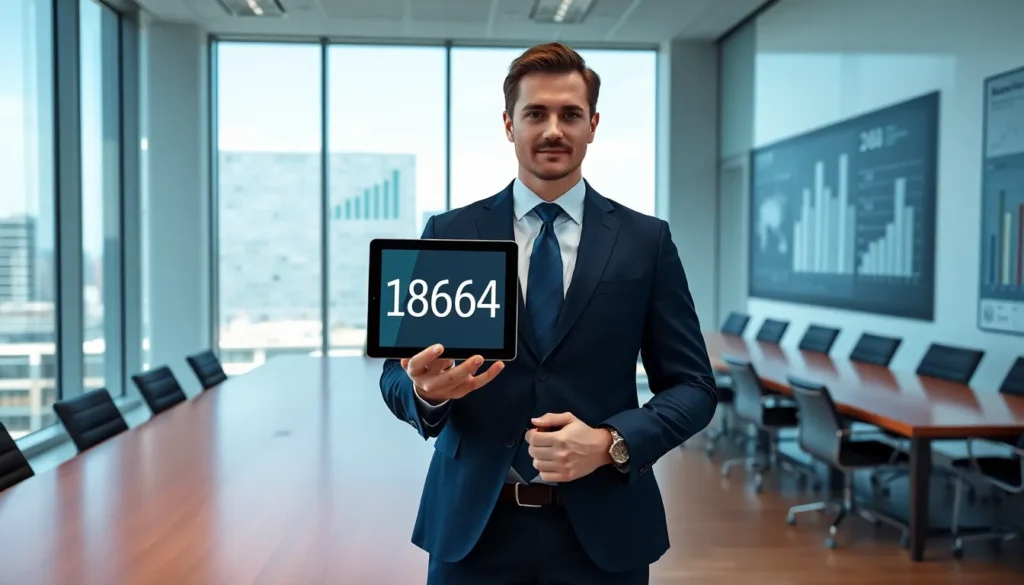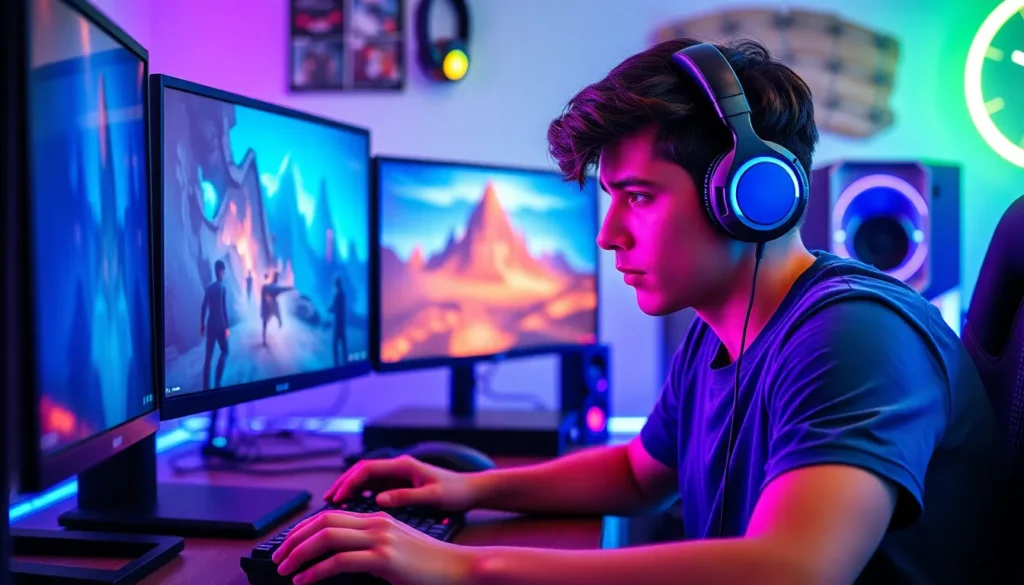Table of Contents
ToggleIn a world where creativity meets technology, the question arises: can ChatGPT whip up a logo that doesn’t just look good but also tells your brand’s story? Picture this: a virtual assistant with the design skills of a seasoned graphic artist, minus the coffee breaks and existential crises. Sounds intriguing, right?
Overview of AI in Design
AI significantly influences design by automating creative processes and offering innovative solutions. Tools powered by machine learning analyze vast amounts of data, deriving insights that enhance design decisions. These tools streamline workflows, allowing designers to focus more on creativity rather than repetitive tasks.
Graphic design software often incorporates AI features. Programs can suggest color palettes, layout options, and typography combinations tailored to specific brand identities. Through pattern recognition, AI identifies successful designs, helping designers create logos that resonate with target audiences.
Logo creation benefits greatly from AI’s data-driven approaches. Algorithms generate design alternatives quickly, providing multiple options for branding. Customization becomes easier as users input preferences, leading to designs that align closely with brand values.
Moreover, AI’s role in design extends to user testing. AI analyzes user interactions and feedback, offering valuable insights into design effectiveness. Such analysis enables adjustments that improve visual appeal and brand messaging.
Real-time collaboration tools allow teams to engage seamlessly across different locations, enhancing project efficiency. Designers and clients benefit from immediate feedback, refining logos faster than traditional methods.
As AI advances, the potential for greater creativity in design increases. Future iterations may bring even more sophisticated capabilities, potentially revolutionizing how logos and other branding materials are created. With its growing impact, AI changes the way design professionals work, prompting new approaches to creativity.
Understanding ChatGPT’s Capabilities

ChatGPT leverages advanced technology to assist in various design tasks, including logo creation. Its capabilities center on natural language processing and creative thinking.
Natural Language Processing
Natural language processing (NLP) enables ChatGPT to interpret and generate human-like text. This allows it to understand user prompts regarding design preferences. Potential users can describe their brand story, desired colors, and intended emotions. ChatGPT efficiently processes this information to suggest design elements that align with user goals. Through iterative conversations, it refines its understanding, tailoring responses to specific needs. Consequently, it becomes a collaborative tool, helping users articulate ideas for effective logo designs.
Creative Thinking
Creative thinking significantly enhances ChatGPT’s design capabilities. The AI algorithm analyzes a vast array of design examples, recognizing patterns and trends in effective logo aesthetics. This provides ChatGPT with a robust foundation for generating unique concepts. Users can explore various design options quickly, tapping into diverse styles and themes. Individual feedback during interactions helps fine-tune these concepts, ensuring that the final design resonates with the target audience. By combining user insights with its extensive design knowledge, ChatGPT inspires innovative approaches to logo creation.
Exploring Logo Design
Logo design plays a critical role in branding, serving as the visual cornerstone for a business. A well-designed logo offers immediate recognition and helps establish brand identity.
Importance of Logo Design
Logos significantly influence first impressions. They encapsulate key brand values and messages through visual symbolism. A memorable logo fosters brand loyalty and encourages consumer trust. Companies with strong branding often see improved customer engagement and market differentiation. According to studies, consistent branding can increase revenue by up to 23%. Additionally, evolving a logo to align with current market trends can revitalize brand perception and attract new customers.
Elements of Effective Logos
Effective logos incorporate simplicity and versatility. Iconic designs often use unique, easily recognizable shapes. Color choice not only attracts attention but also conveys emotional resonance; different hues evoke different feelings. Typography also plays a crucial role, as it impacts legibility and overall aesthetic. Logos need to look great on business cards, websites, and billboards. Scalability ensures that they maintain clarity across various platforms and sizes. Cohesion among these elements creates a powerful branding tool that resonates with the target audience.
Can ChatGPT Design Logos?
ChatGPT can assist in logo design, leveraging its capabilities to translate ideas into visual concepts. It enhances creativity by enabling users to explore a variety of design options.
Process of Logo Creation with ChatGPT
The logo creation process begins with user interaction. Users provide prompts outlining their design preferences, such as color schemes, themes, and styles. ChatGPT processes these inputs and suggests specific design elements that align with the user’s vision. Iterative dialogue allows users to refine their ideas, leading to a clearer direction for the logo. Through this exchange, ChatGPT can present multiple design alternatives, helping users visualize different concepts and guiding them toward a final design that resonates with their brand identity.
Limitations of ChatGPT in Design
Despite its advantages, ChatGPT has limitations in logo design. It can’t create visual graphics since it relies solely on text-based interactions. Users seeking a physical logo must access graphic design software or professional designers for actualization. Understanding nuanced brand aesthetics requires human intuition, which ChatGPT may lack. Context-sensitive feedback essential for effective design still needs human input. While ChatGPT enriches the brainstorming phase, it doesn’t replace the skill and expertise of experienced designers necessary for polished logo creation.
Case Studies and Examples
Real-world applications illustrate how ChatGPT can assist in the logo design process. A clothing brand tested ChatGPT by providing keywords related to its identity. The platform generated multiple logo concepts based on these keywords, suggesting color palettes and shapes aligned with the brand’s ethos.
Another example comes from a tech startup. This company engaged ChatGPT to refine its brand identity. After iterative exchanges, ChatGPT helped clarify the desired aesthetics and focus. The startup achieved a cohesive design direction guided by the suggestions provided through natural language processing.
In a creative agency scenario, designers used ChatGPT during brainstorming sessions. By inputting various creative prompts, the team generated distinctive logo concepts quickly. The agency then selected the most promising designs for further development.
A nonprofit organization sought to rebrand its identity. Using ChatGPT, the team outlined their mission and values. The AI suggested design elements that effectively conveyed their goals, laying the groundwork for the new logo.
While these case studies highlight successes, limitations exist. ChatGPT cannot create visual graphics directly, which means human designers play an essential role in execution. Its suggestions primarily enhance the brainstorming phase, guiding the creative process rather than replacing the nuance of human intuition.
In terms of logo effectiveness, businesses benefit greatly from streamlined discussions facilitated by ChatGPT. Clear examples demonstrate how AI can spark innovative ideas and themes, fostering collaboration among design teams while improving project outcomes. Each instance emphasizes the potential integration of AI in the evolving landscape of logo design.
ChatGPT’s potential in logo design showcases a promising blend of technology and creativity. It serves as a valuable tool for brainstorming and refining ideas, enabling users to explore diverse design concepts effortlessly. By leveraging natural language processing, it can interpret user preferences and suggest elements that resonate with brand identities.
While it can’t create visual graphics directly, its role in enhancing the creative process is undeniable. Human designers still hold the key to executing these ideas with nuance and artistic flair. As AI continues to evolve, the collaboration between tools like ChatGPT and human creativity will likely redefine the landscape of logo design, leading to innovative solutions that meet the demands of modern branding.









